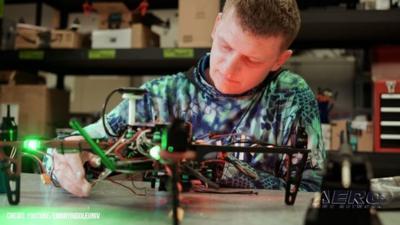Monies to Cultivate Future Aviation Workforce
Embry-Riddle Aeronautical University has received a $485,000 Federal Aviation Administration grant by which the institution will ostensibly help meet growing job demand in the aviation and aerospace industries. The university will accomplish this most subjective and uncertain feat by providing free training for high school students aspiring to become pilots, Unmanned Aerial System (UAS) operators, and aerospace engineers.

Embry-Riddle associate professor of aeronautical science Dr. Carolina Anderson stated: “Embry-Riddle is in the perfect position to help increase the pilot workforce and to continue improving the quality of this workforce.”
The Boeing Company’s Pilot and Technician Outlook sets forth that the aerospace industry, in the coming two-decades, will require no less than 602,000 new pilots and 610,000 new aviation maintenance technicians.
The FAA-backed aviation/aerospace recruitment initiative, spearheaded by Embry-Riddle’s College of Aviation and Gaetz Aerospace Institute, seeks to address projected talent shortages, in part, by developing online ground schools in Private Pilot and remote pilot operations as well as courses in aerospace engineering. The project—which makes use of desktop flight-training devices, small drones, 3D printers, and virtual reality systems—is intended to defray the considerable costs high schools would otherwise incur providing quality aviation curricula to students predisposed to aviation and aerospace careers. In addition to gleaning degrees of familiarity with STEM disciplines and aviation industry rudiments, students partaking in the FAA-Embry-Riddle campaign will earn college credits, high school honors credits and/or industry certifications.
Dr. Colleen Conklin, Embry-Riddle assistant professor and executive director of the school’s Gaetz Aerospace Institute, remarked: “The aviation industry is at a crossroads. The workforce needs are unprecedented. We believe programs such as this will directly feed the aviation workforce pipeline.”
The joint FAA Embry-Riddle plan to cultivate a near-future U.S. domestic aviation workforce builds on efforts formerly undertaken by the Gaetz Aerospace Institute, which in the past two years has provided aviation and aerospace programs to nearly two-hundred middle and high schools—primarily in the state of Florida.
The institute offers dual-enrollment courses in aviation, engineering, and uncrewed systems, as well as the academy’s SMART@ER curriculum, which focuses on courses and outreach in space, manufacturing, aerospace/aviation, robotics, and technology.
Aside from sustaining the aforementioned, the FAA grant will allow Embry-Riddle to share its educational model throughout the U.S., starting with at least ten additional high schools.

Dr. Conklin added: “We are currently recruiting schools to participate and take advantage of this tremendous opportunity.”
The FAA’s largess will also enable Embry-Riddle’s Special VFR Productions division to produce cinema-quality videos with 3D motion graphics, special effects, and professional voiceover for the curriculum, which itself instantiates what the grant proposal called the university’s “proven experience in developing aviation education and flight training tools.”
Dr. Anderson concluded: “This project combines my two passions: aviation and education. Having the opportunity to expose high school students all over the country to STEM and aviation is what is most exciting to me.”
 ANN FAQ: Contributing To Aero-TV
ANN FAQ: Contributing To Aero-TV ANN's Daily Aero-Linx (05.29.24)
ANN's Daily Aero-Linx (05.29.24) ANN's Daily Aero-Term (05.29.24): NORDO (No Radio)
ANN's Daily Aero-Term (05.29.24): NORDO (No Radio) ANN's Daily Aero-Term (05.30.24): Beyond Visual Line Of Sight (BVLOS)
ANN's Daily Aero-Term (05.30.24): Beyond Visual Line Of Sight (BVLOS) ANN's Daily Aero-Linx (05.30.24)
ANN's Daily Aero-Linx (05.30.24)




